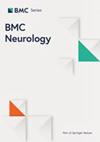Diagnosis of human angiostrongyliasis in a case of hydrocephalus using next-generation sequencing: a case report and literature review
IF 2.2
3区 医学
Q3 CLINICAL NEUROLOGY
引用次数: 0
Abstract
Angiostrongyliasis cantonensis is a severe yet rare parasitic infection caused by the larvae of Angiostrongylus cantonensis. The primary characteristic feature of this foodborne illness in humans is eosinophilic meningitis. Recently, there has been a gradual increase in reported cases globally. Due to the lack of typical clinical symptoms, signs, and specific laboratory tests, early diagnosis of this disease poses significant challenges. Failure to diagnose and treat this condition promptly can result in fatalities. We present the case of a 13-year-old male patient who initially presented with fever and headache. The patient was preliminarily diagnosed with bacterial meningitis and received treatment with antibacterial drugs. However, the patient’s condition worsened, and he developed progressive consciousness disturbances. Eventually, metagenomic next-generation sequencing (mNGS) testing of cerebrospinal fluid samples indicated Angiostrongylus cantonensis infection. Following treatment with albendazole and prednisone, the patient made a full recovery. We include this case report as part of a literature review to emphasize the potential applications of mNGS in the early diagnosis of Angiostrongyliasis cantonensis. mNGS technology plays a crucial role in the diagnosis of angiostrongyliasis cantonensis. As this technology continues to evolve and be applied, we believe it will play an increasingly important role in diagnosing, treating, and monitoring angiostrongyliasis cantonensis.利用新一代测序技术在一例脑积水病例中诊断出人类血管软骨病:病例报告和文献综述
广东 Angiostrongyliasis cantonensis 是由广东 Angiostrongylus 的幼虫引起的一种严重但罕见的寄生虫感染。这种食源性疾病的主要特征是嗜酸性脑膜炎。最近,全球报告的病例逐渐增多。由于缺乏典型的临床症状、体征和特异性实验室检测,这种疾病的早期诊断面临巨大挑战。如果不能及时诊断和治疗,可能会导致死亡。我们介绍了一名 13 岁男性患者的病例,他最初表现为发烧和头痛。患者被初步诊断为细菌性脑膜炎,并接受了抗菌药物治疗。然而,患者的病情不断恶化,并逐渐出现意识障碍。最终,脑脊液样本的元基因组下一代测序(mNGS)检测结果表明,患者感染了坎顿氏安琪斯条虫(Angiostrongylus cantonensis)。在接受阿苯达唑和强的松治疗后,患者完全康复。我们将本病例报告作为文献综述的一部分,以强调 mNGS 在早期诊断坎顿角弓反张病中的潜在应用。随着这项技术的不断发展和应用,我们相信它将在诊断、治疗和监测坎顿氏血管斯特龙线虫病方面发挥越来越重要的作用。
本文章由计算机程序翻译,如有差异,请以英文原文为准。
求助全文
约1分钟内获得全文
求助全文
来源期刊

BMC Neurology
医学-临床神经学
CiteScore
4.20
自引率
0.00%
发文量
428
审稿时长
3-8 weeks
期刊介绍:
BMC Neurology is an open access, peer-reviewed journal that considers articles on all aspects of the prevention, diagnosis and management of neurological disorders, as well as related molecular genetics, pathophysiology, and epidemiology.
文献相关原料
| 公司名称 | 产品信息 | 采购帮参考价格 |
|---|
 求助内容:
求助内容: 应助结果提醒方式:
应助结果提醒方式:


